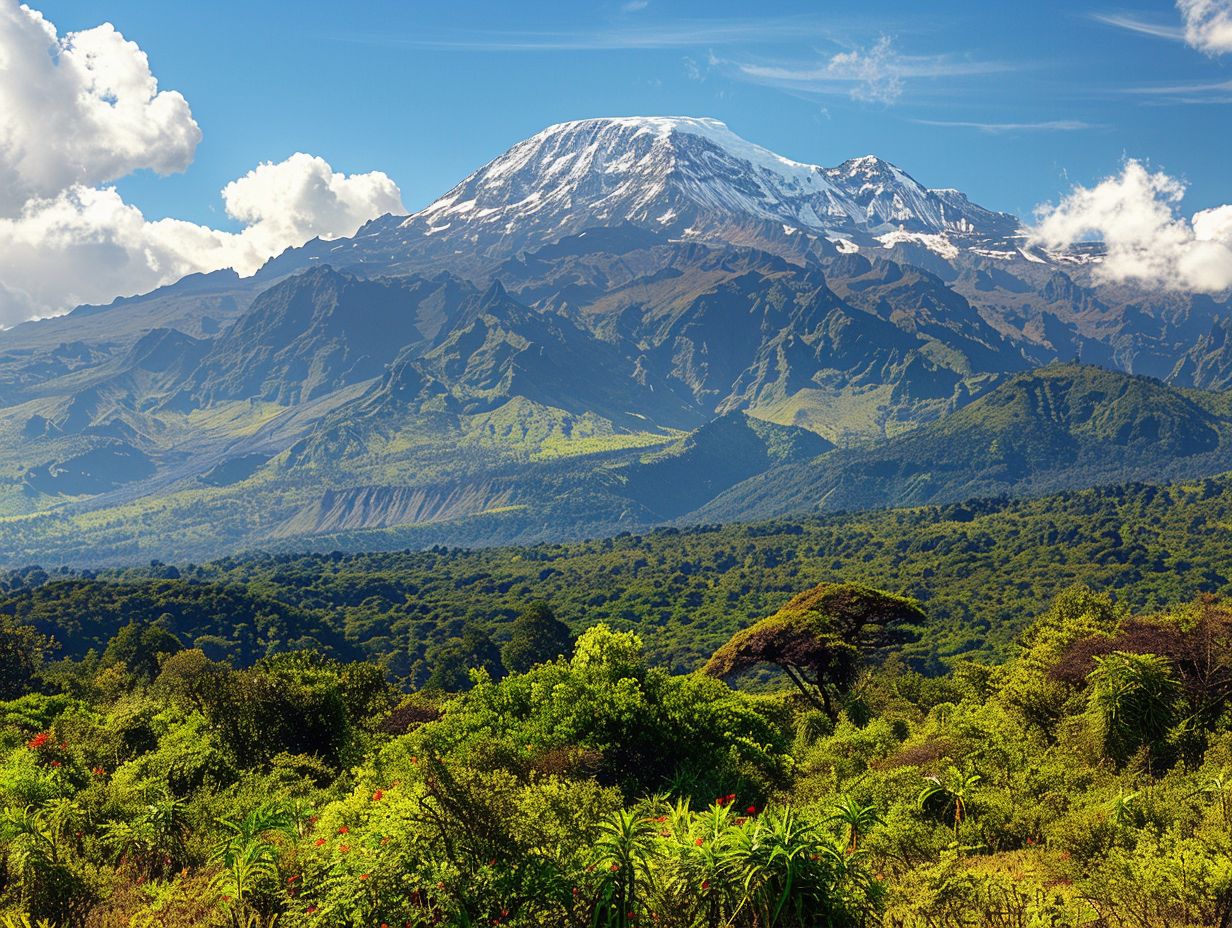
Kilimanjaro, the majestic and iconic mountain located in Tanzania, holds a fascination for adventurers and nature lovers alike. From its impressive height to the challenging trekking routes, there is much to discover about this famous peak.
In this article, we will explore where Kilimanjaro is located, its towering height, the best time to climb, the difficulty level, necessary gear, costs, accommodation options, health risks, history, culture, and some interesting facts.
Get ready to be inspired by the beauty and challenge of climbing Kilimanjaro!
Key Takeaways:

- Kilimanjaro is located in Tanzania, East Africa.
- Kilimanjaro stands at a height of 19,341 feet, making it the tallest mountain in Africa.
- The best time to climb Kilimanjaro is during the dry season from June to October or January to March.
What are Some Interesting Facts about Kilimanjaro?
Mount Kilimanjaro is a dormant volcano with three volcanic cones, Kibo, Mawenzi, and Shira, and its glaciers are receding rapidly due to climate change, presenting a unique geological and environmental phenomenon.
This majestic peak, rising to approximately 19,341 feet, is not just the tallest mountain in Africa but also the highest free-standing mountain globally. Its diverse landscape encompasses lush rainforests, alpine meadows, arid deserts, and majestic glaciers, offering a microcosm of various ecosystems.
Geologically, the mountain is composed mainly of three types of rocks: Shira lavas, Mawenzi volcanics, and the Kibo lavas. These rocks provide insights into the mountain’s complex volcanic history and formation.
Conclusion: The Beauty and Challenge of Climbing Kilimanjaro
Climbing Kilimanjaro offers an unparalleled experience of conquering Africa’s highest summit while navigating its diverse climate zones and witnessing breathtaking vistas, making it a blend of beauty and challenge for adventurers.
Embarking on this journey means ascending through lush rainforests teeming with exotic wildlife, crossing vast moorlands that stretch as far as the eye can see, and finally facing the harsh beauty of the alpine desert before reaching the iconic snow-capped peak.
Reaching the summit of Kilimanjaro requires not only physical endurance but also mental resilience to overcome altitude sickness and the extreme weather conditions that can change in an instant.
The sense of accomplishment and awe that envelops climbers at Uhuru Peak, standing above the clouds, with the vast African plains stretching below, is a moment that etches itself into the soul of every adventurer who undertakes this extraordinary challenge.
Frequently Asked Questions

What is Kilimanjaro?
Kilimanjaro is a dormant volcano located in Tanzania, Africa. It is the highest mountain in Africa and one of the Seven Summits.
How tall is Kilimanjaro?
Kilimanjaro stands at 19,341 feet (5,895 meters) tall, making it the tallest mountain in Africa and the highest freestanding mountain in the world.
When was Kilimanjaro first climbed?
The first recorded ascent of Kilimanjaro was on October 6, 1889, by German geographer Hans Meyer and Austrian mountaineer Ludwig Purtscheller.
What is the weather like on Kilimanjaro?
The weather on Kilimanjaro can vary greatly, but generally, the lower slopes are warm and wet, while the summit is cold and covered in snow. It is important to prepare for all types of weather when climbing Kilimanjaro.
How long does it take to climb Kilimanjaro?
The average time to climb Kilimanjaro is between 6-8 days, depending on the chosen route. It is recommended to take your time and allow for proper acclimatization to increase your chances of reaching the summit.
Is Kilimanjaro open to all levels of hikers?
While Kilimanjaro is considered a non-technical climb, it still requires a good level of physical fitness and mental determination. It is important to train and prepare for the altitude and challenging terrain before attempting to climb Kilimanjaro.